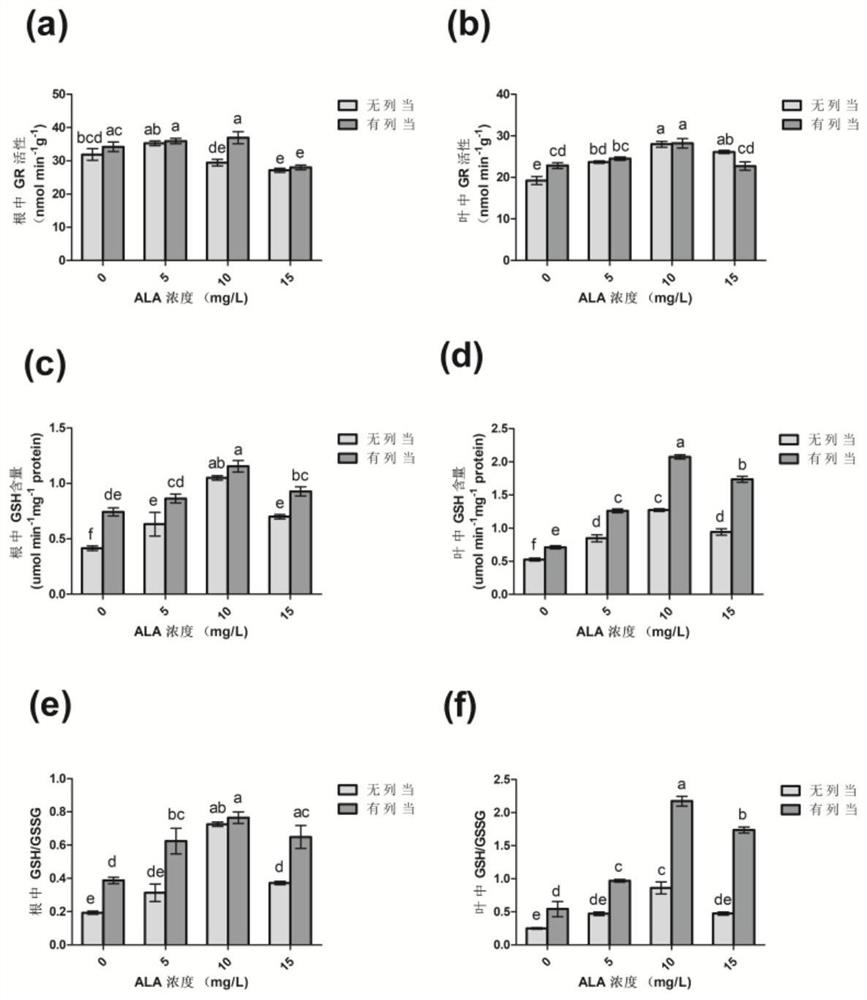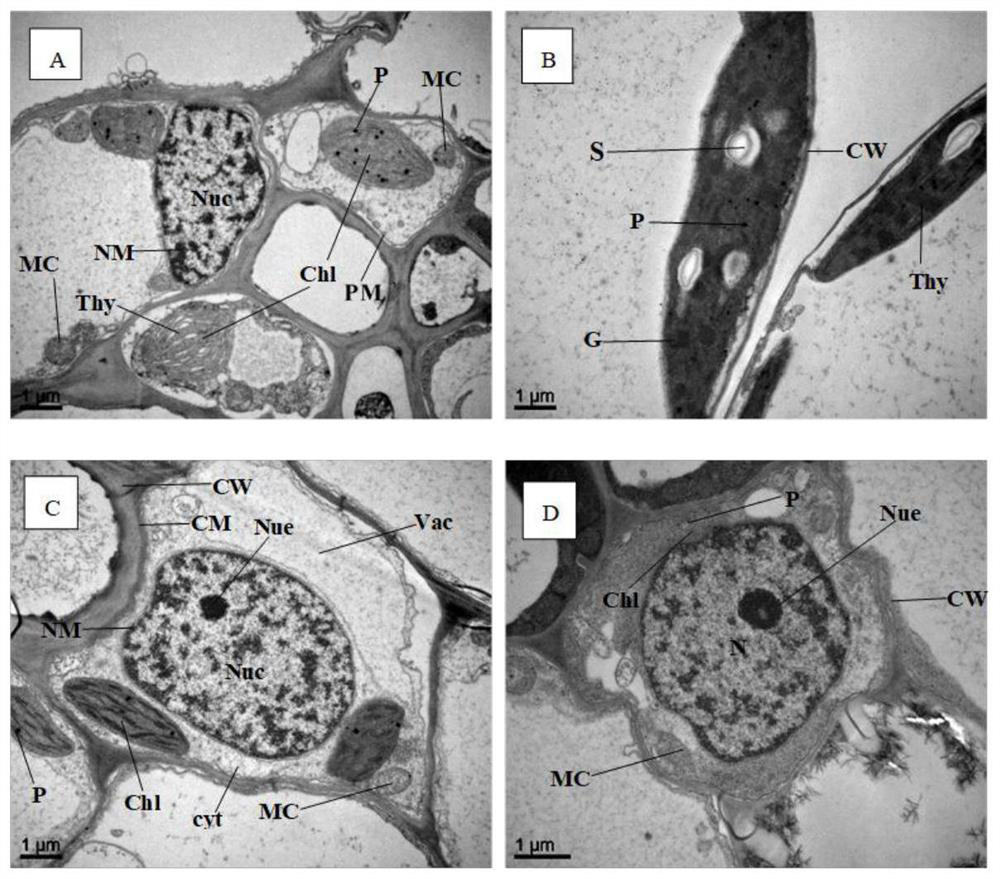A method of using 5-aminolevulinic acid to improve sunflower's resistance to parasitic weeds Helianthus helianthus
A technology of aminolevulinic acid and sunflower, applied in the direction of botany equipment and methods, application, seed and rhizome treatment, etc., to achieve the effect of reducing the use and protecting the ecological environment
- Summary
- Abstract
- Description
- Claims
- Application Information
AI Technical Summary
Problems solved by technology
Method used
Image
Examples
Embodiment 1
[0038] 1 Preparation of different concentrations of 5-aminolevulinic acid
[0039] Weigh 5-aminolevulinic acid in the dark, and prepare 0, 5, 10, 15, 20 mg / L ALA mediation solution with distilled water.
[0040] Table 1 Concentration gradient of 5-aminolevulinic acid
[0041]
[0042] Note: The recommended concentration refers to the optimal concentration obtained after passing the test, that is, the ALA content added per 1L of water.
[0043] 2 Materials and methods
[0044] 2.1 Pretreatment and germination of sunflower seeds
[0045] Select plump and healthy sunflower TK0409 seeds to peel off the exocarp, sterilize in 70% absolute ethanol solution for 2 minutes, rinse with sterile water several times, put the seeds in different concentrations of ALA solution, soak for 18 hours; fully absorb the ALA solution The seeds were washed twice with distilled water, put into a petri dish with two layers of filter paper containing distilled water, and cultured at 25° C. in the da...
Embodiment 2
[0056] Example 2 Determination of antioxidant enzymes
[0057] Antioxidant enzyme activity includes ascorbate peroxidase (APX), catalase (CAT), peroxidase (POD), superoxide dismutase (SOD), and glutathione reductase (GR) , the antioxidant enzyme activity was measured with a Muti-ModeReader (SYNERGY HTX) instrument according to the following method.
[0058] 1. Determination of APX enzyme
[0059] The APX activity assay method was improved according to the method of Nakano and Asada (1981). The reaction system was 3 mL, including 2.9 mL of 100 mM potassium phosphate buffer (pH 7.0, containing 0.1 mM EDTA-Na 2 , 0.3mM Ascorbic Acid, 0.06mM H 2 o 2 ) and 100 μl enzyme extract. Measure the absorbance change of the reaction mixture within 1min at 290 nm, and the extinction coefficient is 2.8mM -1 cm -1 .
[0060] 2. Determination of CAT enzyme
[0061] CAT activity through H 2 o 2 Determination of consumption (the extinction coefficient is 39.4mM -1 cm -1 ). The react...
Embodiment 3
[0074] The measurement of embodiment 3 MDA and ROS
[0075] MDA and ROS were measured with a spectrophotometer (UV-5500, METASH).
[0076] 1. Determination of MDA
[0077] The content of MDA was determined according to Zhou and Leul (1999) with modified thiobarbituric acid colorimetric method. Add 5 mL of 0.5% thiobarbituric acid (TBA, prepared with 10% trichloroacetic acid) solution to 2 mL of the supernatant enzyme solution, react in a water bath at 95 ° C for 30 min, and immediately put it in an ice bath; Colorimetric at the place, the difference is used to calculate the MDA content, the extinction coefficient is 155mM -1 cm -1 .
[0078] 2. Determination of ROS
[0079] Reactive oxygen species (ROS) including hydrogen peroxide (H 2 o 2 ), superoxide anion (O 2 - ),Hydroxyl radicals( - OH).
[0080] 2.1H 2 o 2 Determination of
[0081] h 2 o 2 According to the method of Velikova et al. (2000), the reaction system was 2 mL, containing 0.5 mL of supernatant, 0...
PUM
 Login to View More
Login to View More Abstract
Description
Claims
Application Information
 Login to View More
Login to View More - R&D
- Intellectual Property
- Life Sciences
- Materials
- Tech Scout
- Unparalleled Data Quality
- Higher Quality Content
- 60% Fewer Hallucinations
Browse by: Latest US Patents, China's latest patents, Technical Efficacy Thesaurus, Application Domain, Technology Topic, Popular Technical Reports.
© 2025 PatSnap. All rights reserved.Legal|Privacy policy|Modern Slavery Act Transparency Statement|Sitemap|About US| Contact US: help@patsnap.com



